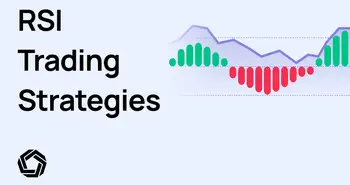The True Strength Index (TSI) Explained: A Comprehensive Guide to Measuring Market Momentum

The True Strength Index (TSI) is an essential instrument for traders and investors looking to gauge market momentum accurately. In this guide, we will delve into the intricacies of TSI, exploring its construction, significance, and application in trading strategies. Let’s unpack this powerful indicator together.
Defining the True Strength Index
The Basics of True Strength Index
The True Strength Index is a momentum indicator that assesses the rate of change in price movements. Conceived by William Blau, the indicator provides insights into the strength and momentum of a price movement in both upward and downward trends. It ranges from -100 to +100, where values above +25 typically indicate an overbought condition, and those below -25 signal an oversold condition.
Unlike many other indicators, the TSI looks to capture the essence of momentum by reflecting changes in price over a specified period. This helps traders not only to identify potential buy and sell signals but also to maintain a clear perspective on market corrections. By understanding the TSI, traders can make more informed decisions, as it offers a nuanced view of market dynamics. For instance, during periods of high volatility, the TSI can help distinguish between genuine price movements and those driven by market noise, allowing traders to filter out false signals and focus on trends that are likely to persist.
The Mathematical Formula Behind True Strength Index
The calculation of the True Strength Index relies on the weighted average of the price changes. In essence, it uses the following mathematical formula:
- Calculate the price changes for the chosen period.
- Compute the smoothed moving averages of the price changes.
- Apply the TSI formula: TSI = (Smoothed Price Change) / (Smoothed Absolute Price Change).
Once you have the TSI value, you can begin analyzing market trends, but understanding the context of your readings is equally important. For example, a TSI reading approaching +50 may suggest a strong bullish trend, while a reading near -50 could indicate a bearish sentiment. Traders often use the TSI in conjunction with other indicators, such as the Relative Strength Index (RSI) or moving averages, to confirm signals and enhance their trading strategies. This multi-faceted approach not only increases the accuracy of predictions but also helps in managing risk effectively, as traders can set more precise entry and exit points based on a comprehensive analysis of market conditions.
The Importance of True Strength Index in Trading
How True Strength Index Influences Trading Decisions
The TSI can significantly enhance trading decisions by offering clarity on market momentum. Traders often use TSI readings to confirm potential buy or sell signals from other indicators. For instance, if your TSI reading crosses above zero while other indicators also suggest a bullish market, this is a strong confirmation for a buy signal.
Additionally, the TSI aids in filtering out noise in the market, making it an effective tool for traders who prefer a more systematic approach. Personally, I’ve found that using TSI in conjunction with price verification indicators has improved my decision-making process over time. By relying on TSI, traders can avoid impulsive decisions based on fleeting market fluctuations, allowing for a more disciplined trading strategy that aligns with their long-term goals.
Moreover, the TSI is particularly useful in volatile markets where price movements can be erratic. In such scenarios, it serves as a stabilizing factor, helping traders to remain focused on the underlying trend rather than getting swept away by short-term price swings. This capability to maintain perspective is invaluable, especially during periods of heightened uncertainty.
The Role of True Strength Index in Market Analysis
Market analysis isn’t just about numbers; it’s about understanding behavior. The True Strength Index acts as a lens through which traders can better interpret market dynamics. By integrating TSI into market analysis, one can assess when trends are strong and likely to continue versus when reversals might occur.
During my trading career, I often noticed that markets exhibiting strong TSI readings tended to maintain momentum, while those showing signs of divergence were on the verge of correction. This reinforced the importance of always paying attention to TSI when analyzing market conditions. The ability to identify these divergences can provide traders with a critical edge, allowing them to anticipate potential market shifts before they happen.
Furthermore, the TSI can also be instrumental in identifying overbought or oversold conditions. When the TSI reaches extreme levels, it can signal potential exhaustion in the current trend, prompting traders to reassess their positions. This aspect of TSI not only enhances risk management strategies but also encourages traders to adopt a more proactive approach to their trades, ultimately leading to more informed and strategic decision-making in the fast-paced world of trading.
Interpreting True Strength Index Signals
Understanding Positive and Negative Divergences
Divergence is a cornerstone in TSI analysis. A positive divergence occurs when prices make new lows while TSI forms higher lows, indicating a potential trend reversal upwards. On the contrary, a negative divergence occurs when prices make new highs while TSI shows lower highs, often signalling an impending downward trend.
Recognizing these divergences can be an invaluable skill. I recall a particular trade where a subtle positive divergence in TSI heightened my awareness and led to a successful long position in a seemingly bearish market. It emphasizes how critical it is to scrutinize each TSI signal.
The Significance of Overbought and Oversold Levels
Understanding overbought and oversold levels is crucial for effective trading. A TSI value above +25 can indicate overbought conditions, whereas a value below -25 usually indicates oversold conditions. These indicators can signal potential reversals or retracement strategies.
Over the years, I have consistently leveraged this aspect of the TSI to time my entries and exits more effectively. By coupling this analysis with price action, I’ve often found high-probability set-ups that yield attractive returns with reduced risk.
Combining True Strength Index with Other Indicators
Pairing True Strength Index with Moving Averages
Moving averages smooth out price data and offer another layer of analysis when paired with TSI. When the TSI crosses above the moving average trend lines, it can act as an added confirmation for trend direction. This dual indicator approach improves the robustness of your trading signals.
My approach has been to use TSI to gauge momentum and moving averages to assess trend direction. This synergy has allowed me to develop a nuanced strategy that stands the test of various market conditions.
Using True Strength Index alongside Relative Strength Index
The Relative Strength Index (RSI) complements the TSI by providing an additional perspective on momentum. While the TSI zero line can provide a backdrop for understanding the strength of trends, the RSI helps gauge the overbought or oversold nature of the market. Analyzing both can yield clearer signals, especially when they agree on overbought or oversold conditions.
In a recent trading setup, combining RSI and TSI readings helped me identify a potential reversal in a commodity I was tracking. This enriched analysis confirmed my position and led to a profitable trade.
Common Misconceptions About True Strength Index
Debunking Myths Around True Strength Index
Many traders fall into the trap of over-relying on the TSI as a standalone indicator. One common misconception is that TSI can predict price movement solely based on its values. In reality, TSI should always be used in conjunction with other technical indicators and price action analysis.
Another myth is that higher TSI values automatically mean higher profits. I’ve learned through experience that this isn’t the case; understanding the context of these values is crucial for making informed decisions and avoiding impulsive trades.
Avoiding Common Pitfalls in True Strength Index Analysis
To maximize the efficacy of TSI analysis, it’s vital to maintain a disciplined approach. Many novice traders underestimate the impact of market sentiment and neglect to account for macroeconomic factors influencing market conditions.
One pitfall I suggest avoiding is disregarding timeframe discrepancies. What may look bullish on a short term chart could be bearish on a longer timeframe. This misunderstanding can lead to premature entries or exits. Always strive to analyze multiple timeframes for a well-rounded perspective.
FAQ
What is the True Strength Index?
The True Strength Index is a momentum indicator that gauges the strength of price movements and helps in making trading decisions.
How does TSI differ from RSI?
While both the TSI and the RSI measure momentum and trends, TSI focuses on the rate of change in price movements, whereas RSI measures momentum relative to recent price changes.
Can TSI be used alone for trading?
It is inadvisable to use TSI as a standalone trading tool. It works best when paired with other indicators and a sound trading strategy.
What TSI levels indicate market conditions?
Generally, TSI values above +25 indicate overbought conditions, whereas values below -25 suggest oversold conditions.
The True Strength Index is a dynamic tool for traders keen on understanding market momentum. By grasping its applications, limitations, and how to integrate it into your trading strategy, you can navigate the markets with greater confidence and precision.
Ready to put your understanding of the True Strength Index to the test in a real-world trading environment? Look no further than Morpher, the innovative trading platform that's revolutionizing investing with blockchain technology. With Morpher, you can apply your TSI strategies across a vast array of markets, from stocks and cryptocurrencies to forex and even niche markets like NFTs, without the burden of fees or liquidity constraints. Experience the freedom of fractional investing, the power of 10x leverage, and the safety of a non-custodial wallet. Sign up now to elevate your trading game and receive your free sign-up bonus.

Disclaimer: All investments involve risk, and the past performance of a security, industry, sector, market, financial product, trading strategy, or individual’s trading does not guarantee future results or returns. Investors are fully responsible for any investment decisions they make. Such decisions should be based solely on an evaluation of their financial circumstances, investment objectives, risk tolerance, and liquidity needs. This post does not constitute investment advice.

Painless trading for everyone
Hundreds of markets all in one place - Apple, Bitcoin, Gold, Watches, NFTs, Sneakers and so much more.

Painless trading for everyone
Hundreds of markets all in one place - Apple, Bitcoin, Gold, Watches, NFTs, Sneakers and so much more.









